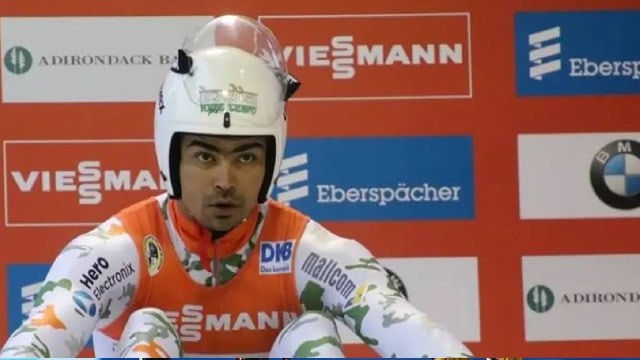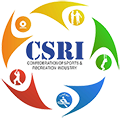At Paris Olympics, Indian athletes to get a taste of home: Dal, roti, aloo-gobi, chicken curry
Besides food, the Athletes Village in Paris will have a full-fledged Indian sports science centre under the supervision of Dr Dinshaw Pardiwala, who has treated Olympics wrestler Vinesh Phogat and cricketer Rishabh Pant.

The upcoming Paris Olympics could see Indian sportspersons landing some comfort food on their plates. In a first, in the dining halls of the Athletes Village will be specially curated steamed Basmati rice, dal, roti, aloo-gobi, gently-spiced Indian-style chicken curry and an assortment of South Asian broths.
Shiva Keshavan, who was recently appointed India’s deputy chef de mission for the Olympics, said the menu was passed on to the Paris organisers of the Games during their recent meeting with the Indian Olympic Association (IOA). He said the early recce meeting was held to ensure Indian athletes would feel at home, even in the crucible of high-pressure competition, far away from the country.
“Many of our recommendations for a modified menu to include Indian dishes were accepted. Each one was cleared by a nutritionist,” said Keshavan, a former Winter Games luge athlete. Contingents from previous Games have often highlighted the need for an Indian menu, he added.
“Food tends to be a big issue with our athletes. Of course, at the Olympics you can engage with cuisines from all over the world in the main dining area. But we pressed the organisers to include a wider South Asian menu for our athletes. Athletes are anyway out of their comfort zones (while travelling), but food shouldn’t be a surprise sprung on them,” he said.
Dining halls at Olympics have traditionally accommodated Far East and West Asian cuisines and it is usually to these spaces that Indians craving some semblance of familiarity troop to.
Tokyo Olympics gymnast Pranati Nayak said that while athletes get used to sampling new fare, and mostly don’t fuss about what they’re eating, peculiar problems can arise.
“There’s Asian food available, so I would get fish, rice, fruits, boiled veggies. But the protein requirement isn’t always met. Personally, I only eat chicken, so I would be constantly worried about the meat I was eating,” she said.
Stressing that given the effort to maintain body weights, athletes eat only for nutrition and not for taste, Pranati said it would, however, be nice to find a familiar corner of dining. “At the Glasgow Commonwealth Games, my first Games, I remember that I kept eating ice cream because of the fear of ingredients in the other dishes. Big mistake, but I couldn’t find anything else,” she recalled.
Rupinder Pal Singh, former captain of India’s hockey team and defender, said that as professional athletes, they adapt to western tastes. “Eating food with less masala, high on nutrition helps performance. Yet, after two-three days, you feel homesick and have the urge to eat Indian food, or just two chapatis, dal or something. On rest days, we try and find Indian food. I remember in Rio, we used to go to the city in search of an Indian restaurant,” he said.
Rani Rampal, two-time hockey Olympian, said the scale of a Games Village dining area can be overwhelming. “But it’s different from what we are used to, the oil they use, the spices… So you have to get used to it. Food is very important for athletes, no matter where you are from. It’s about taste and nutrition. Sometimes, you need Indian food, more for a mental boost than anything else. You may eat a little, but it makes you happy and energetic. You need to uplift your mood… You want a basic Indian meal, roti and dal, after two-three days,” she said.
Besides food, the Athletes Village in Paris will have a full-fledged Indian sports science centre under the supervision of Dr Dinshaw Pardiwala, who has treated Olympics wrestler Vinesh Phogat and cricketer Rishabh Pant. “The centre will have a complete medicine and recovery unit. A lot of machinery is being shipped out to set it all up,” Keshavan said.
Athletes headed to Paris will also receive detailed instructions on logistics, Keshavan said. “The way the ‘Green Games’ are structured, some things will be different, like transport will be limited to certain times,” he said. The 2024 Games are being described as the greenest in Olympic history, with Paris pledging to halve the event’s carbon footprint compared to the previous versions of the competition.
Indian athletes will be briefed on the opening ceremony, which is likely to see contingents entering on boats and barges along the Seine river, and not in a traditional stadium. “IOA has a hospitality partner which is looking at the accommodation of those athletes who won’t be in the Games Village,” Keshavan, the five-time Winter Olympian, said.
Additional efforts are on to inform athletes about protocols. “Every athlete will have a compulsory anti-doping workshop. Also, they will be made aware of how to conduct themselves as ambassadors of India. They know this is not a luxury visit, but we will ensure they are comfortable.”
The IOA will also streamline communications and have dedicated routes to escalate problems and intervene in cases of protest. Keshavan’s networking, given his many years as an international athlete, will come in handy.
Athletes will also be steered towards social media protocols. “We will have clear guidelines on what is okay to post on social media, what is not. Obviously, people want to see them in the Village and know their experience. But we will brief them about the confidential information that they may be privy to but can’t post,” Keshavan added.
The Indian Express

